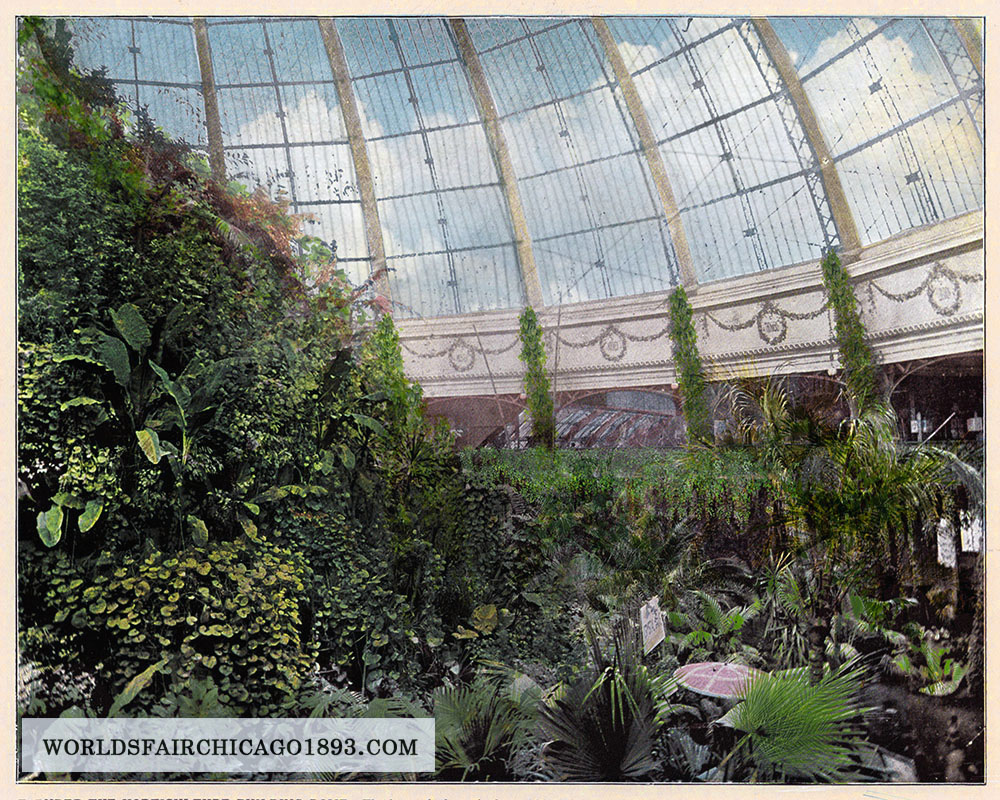
California had a knack for building unusual towers for the 1893 World’s Fair.
An amber-hued obelisk known as the “Olive Oil Tower” greeted visitors entering the south portal of the California Building. This display from Santa Barbara County was constructed from 2,000 quart-sized bottles of virgin liquid. In the northwest corner of the building, Butte County built twin towers made from several hundred boxes of choice dried fruits. In an upper floor of the Horticultural Building stood a “Walnut Tower,” twenty-feet high, constructed of plate glass, containing more than 2,000 pounds of English walnuts contributed by Los Angeles County growers. But none of these delighted visitors’ senses as much as the curious display on the main floor of Horticultural Hall.
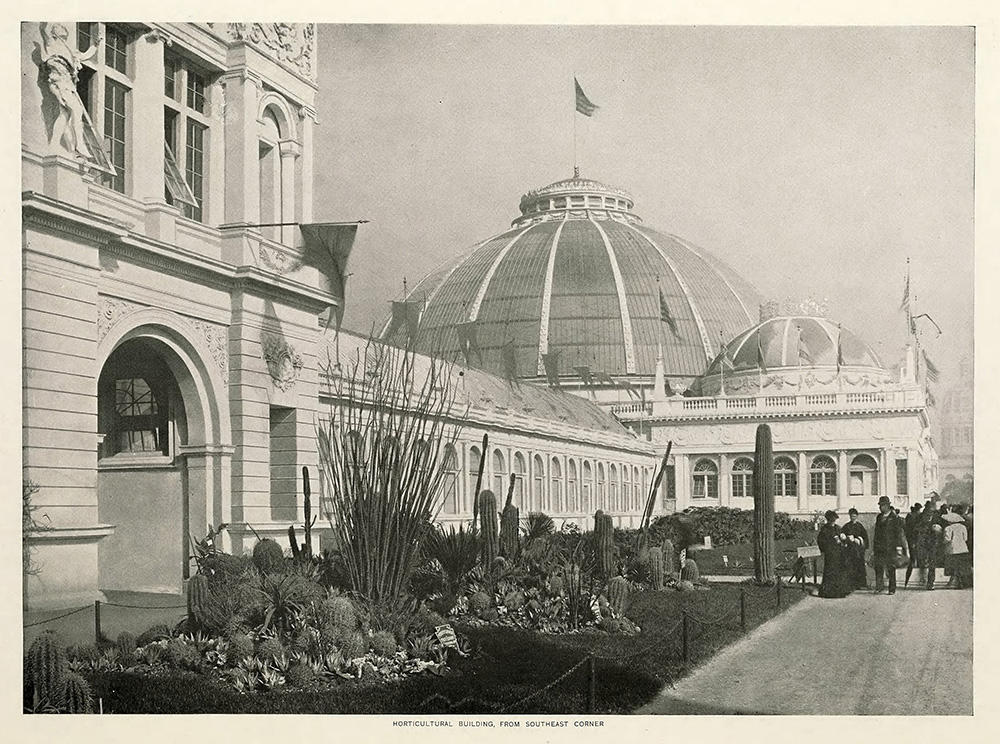
The Horticultural Building, designed by William Le Baron Jenney. [Image from Bancroft, Hubert Howe The Book of the Fair. The Bancroft Company, 1893.]
California’s citrus citadel
Visitors strolling under the great dome often caught a whiff of citrus fragrance tempting them to continue into the southwest curtain. Emerging from the labyrinth of beautiful tropical plants, they first delighted in the sweet air, heavy and fragrant with the perfume of fruit from the Golden State. Then they would see the surprising display of Los Angeles County, California: a thirty-five-foot tall “Tower of Oranges.”
The monument rose from a base that was between twelve and fourteen square feet up to a height of eight feet. Above this rose a cylindrical shaft of beautiful proportions, surmounted by a stuffed eagle with outstretched wings with tips that “fairly touch the sides of the glass roof.”
“While other counties had, respectively, chosen olive oil, beans, raisins, etc., to represent them,” recorded the Final Report of the California World’s Fair Commission, “Los Angeles decided to make the orange her special feature.” Frank Wiggins, Assistant Secretary and Superintendent of the Los Angeles Chamber of Commerce who served as the general manager for the state’s horticultural display erected the display.
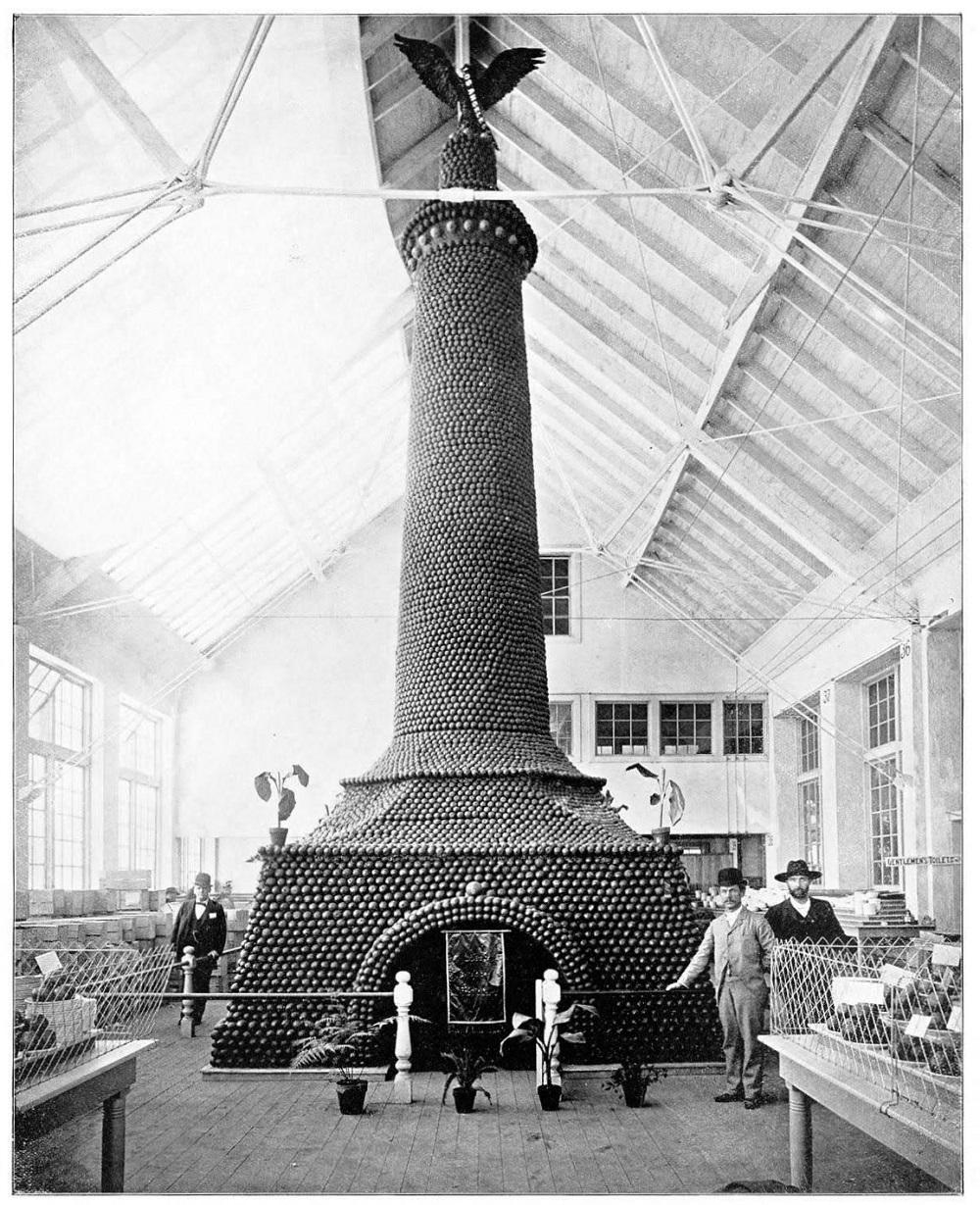
“Los Angeles decided to make the orange her special feature” at the 1893 World’s Fair by erecting a Tower of Oranges in Horticultural Hall. [Image from The Dream City. A Portfolio of Photographic Views of the World’s Columbian Exposition. N. D. Thompson, 1893.]
“Are those are real oranges?”
The Tower of Oranges was a treat for the eyes and nose. “The monument is an imposing one and is a crowning glory of fruit from Los Angeles County,” wrote the Baltimore Sun. The California Final Report noted that “being so sightly in design and construction,” the tower was featured in illustrated papers in the U.S. and foreign countries. “The very sight of it will prove deliciously suggestive to all the young folks who are so fortunate as to visit the fair,” shared the Pike County (PA) Dispatch.
One newspaper correspondent from Kansas overheard a lady asking her escort, “John do you think those are real oranges?” The reporter observed that “evidently she did not come from a tropical country.”
Adding to the redolent atmosphere was the nearby citrus display that included a spread of the County’s finest specimens of Malta Bloods, Mediterranean Sweets, Wilson Seedlings, Joppas, St. Michael’s, Konahs, and Australian and Washington Navels, Lisbon, Sicily, Villa Franca, Bonnie Brae and Eureka lemons, shaddocks, pomelos, grape fruit, China lemons, citrons, Mexican limes and apples, and jars containing enormous specimens of fruit.
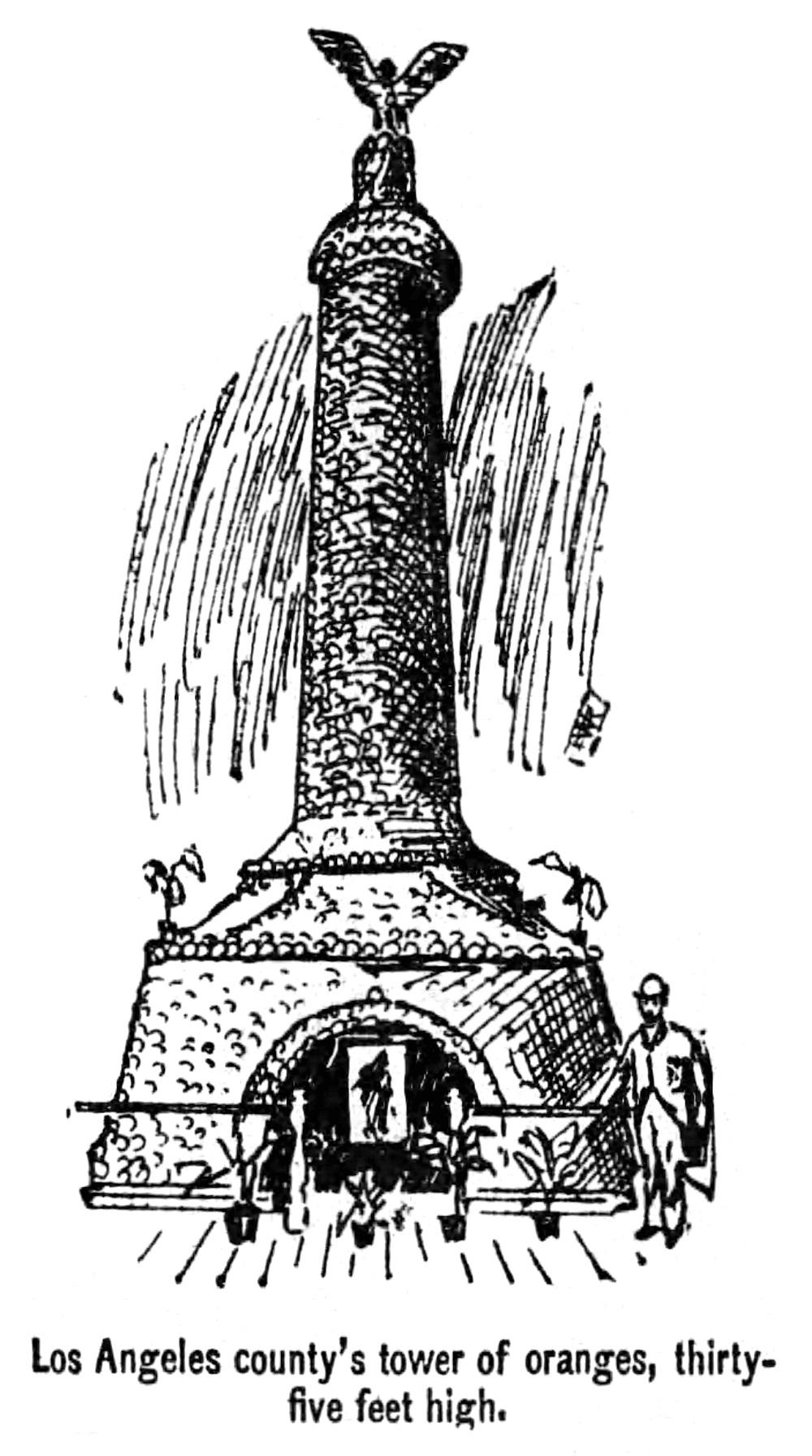
California’s Tower of Oranges stood thirty-five feet tall. [Image from the Los Angeles Times Jun. 18, 1893.]
Keeping it Fresh
“At a little distance it looks like a solid mass,” told an article in the Indianapolis Journal. The oranges were put on the tower as veneering, without pressing against each other. “The oranges are not injured in the least by being put on the structure,” reported the San Francisco Chronicle. “In the woodwork a curved piece of wire is fastened, on which the fruit rests, and the oranges are placed so close together that nothing but their surface is seen.” According to The Dream City Portfolio of Photographic Views, “the wire fastenings could not be detected until the fruit had shrunken with months of exhibition; one set of oranges lasted through the Fair, though looking much the worse for exposure.”
Other sources described some regular refreshening of the monument. Garden and Forest magazine noted that the base was made of large Washington Navals (“the one distinguishing orange of California”), but as they passed out of season, Mediterranean Sweets and others were substituted. Toward the top, smaller oranges were used. The pieces of fruit had to be renewed every three or four weeks. The estimated cost of $4,000 went into erecting and keeping the citrus tower fresh and beautiful.
Each side featured ornamental arches from which hung silk bannerets. A handsome satin gonfalon hung at the base, giving the name of the exhibitor. Some photographs show the eagle wearing a sash labeled “Los Angeles County.” At the base of the tower stood a box with a slot in it.
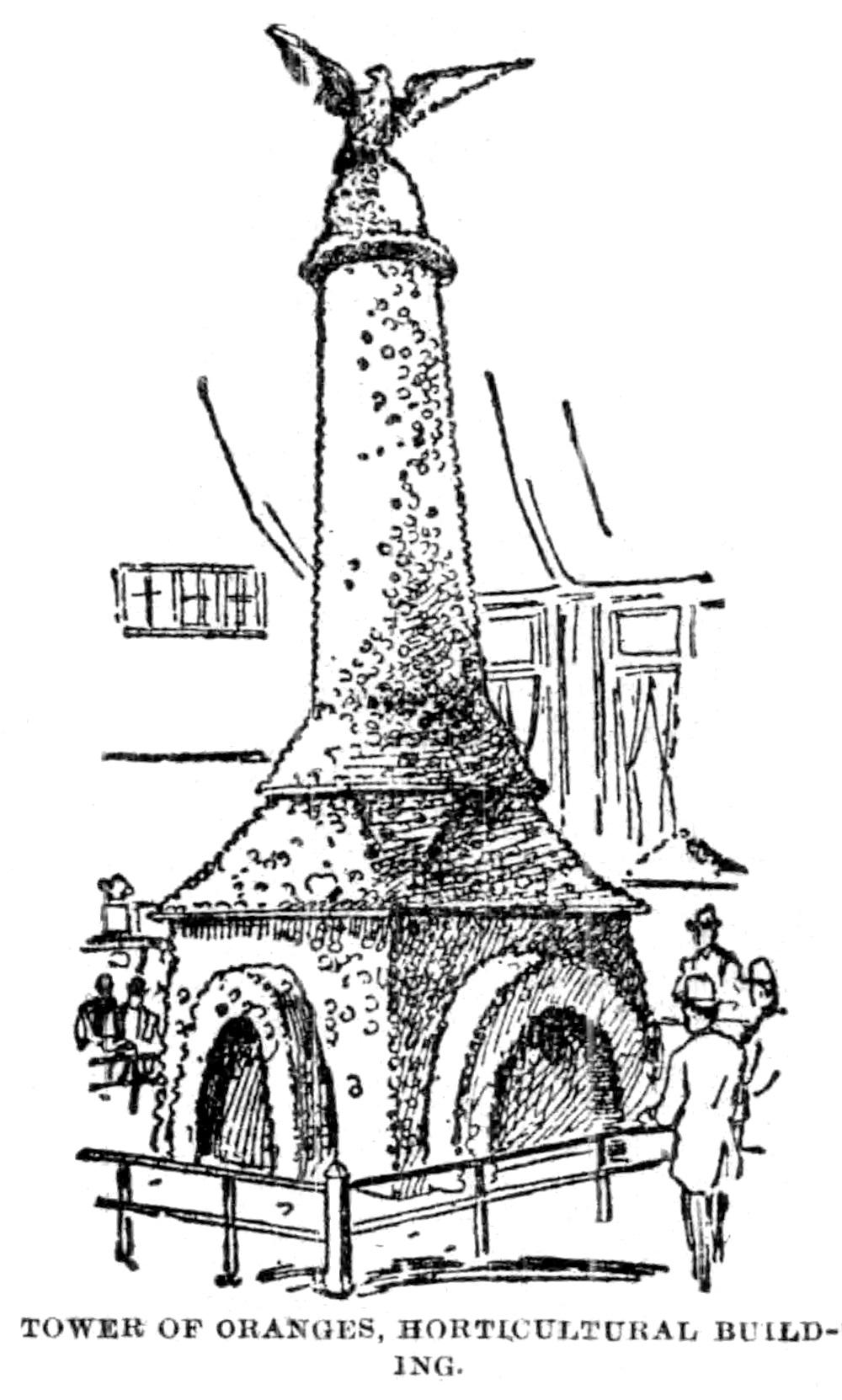
The Tower of Oranges looked “like a solid mass” from a distance. [Image from the Bryan (OH) Press May 18, 1893.]
How many oranges?
Besides the aroma, the orange display had another way to interact with visitors: a contest. Visitors could make their best estimate of the number of oranges on the tower, write their answer on a slip of paper, and place in the box. The San Francisco Chronicle explained the contest:
“Visitors who are good at guessing will have a chance to try for a box of naval oranges and picked specimens. … The problem is to calculate how many oranges there are in the tower. The name and address of the candidate is put on each slip and after the exposition is over the prize will be sent to the winner, free of freight charges, whether he lives in Patagonia or Hong Kong.”
The winner, it turned out, lived much closer. Clara E. Harwood from Norwich, Connecticut, and daughter of the city’s newly elected mayor, guessed that the Tower of Oranges contained either 13,871 or 13,872 (depending on the source) pieces of fruit. In fact, the tower held 13,873 oranges. Her local newspaper reported on November 9 that Miss Harwood “has since learned that she … won first prize, a large box of delicious oranges, which have just been sent on to her.”
Strangely, the contest did not seem to run for the duration of the Fair, as announced. The Los Angeles Times reported on the winner and winning guess on June 18! The paper noted that “it was an exciting and hotly contested struggle. About ten thousand people sent in answers, hoping to secure the prize package … Some guessed as high as 30,000,000.” So popular was the guessing contest that California ran another using the mammoth orange in their state building.
SOURCES
“American Fruits” Baltimore Sun Jul. 25, 1893, p. 6.
“California’s Share” San Francisco Chronicle May 5, 1893, p. 13.
“Citrous Fruits” Garden and Forest Jul. 19, 1893, p. 309.
The Dream City. A Portfolio of Photographic Views of the World’s Columbian Exposition. N. D. Thompson, 1893.
“A Few of the Big Things” Indianapolis Journal May 31, 1893, p. 3.
Final Report of the California World’s Fair Commission. A. J. Johnson, 1894.
“In the Citrus Belt” Pike County (PA) Dispatch Aug. 24, 1893, p. 1.
“It Lightened” Los Angeles Times Jun. 18, 1893, p. 12.
“Miss Clara E. Harwood …” Stafford Springs (CT) Press Nov. 9, 1893, p. 1.
“World’s Fair Letter” White Cloud (KS) Globe-Tribune Jun. 16, 1893, p. 3.

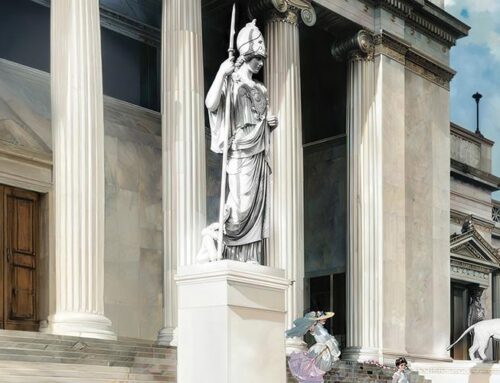
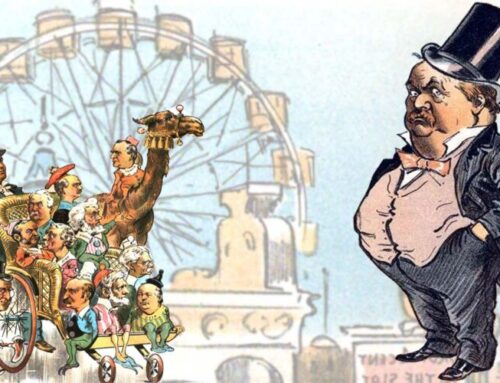
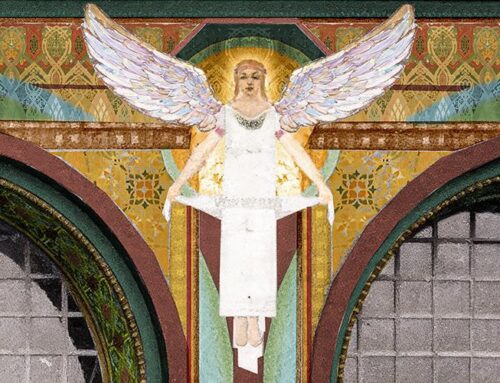
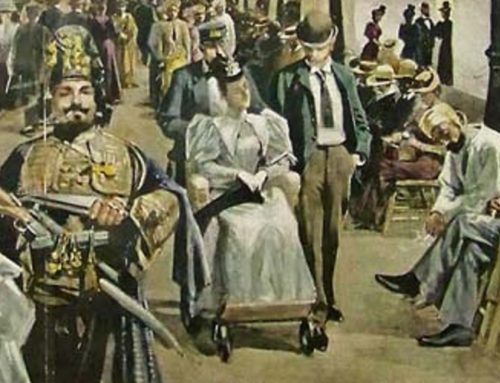

Leave A Comment